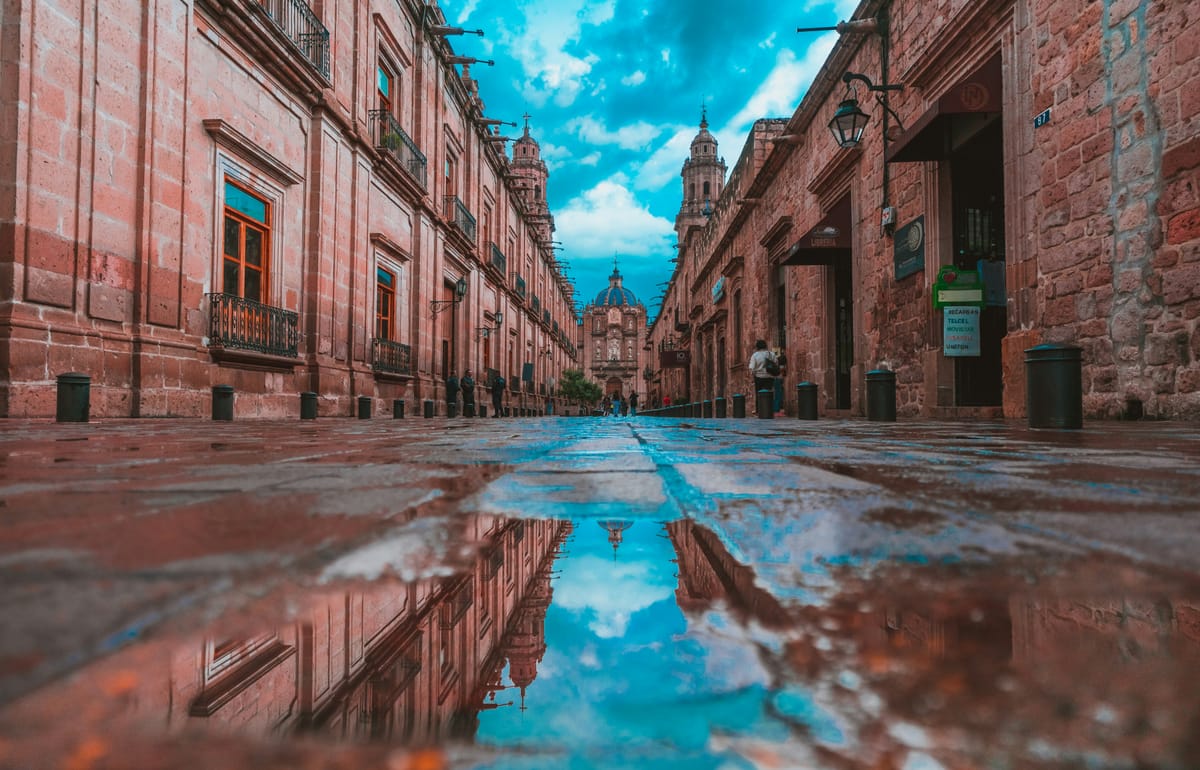Temple of Shroom
The shimmer of “You Dreamed of Empires” by Álvaro Enrigue.

I've never been a voracious reader of books, largely because I read dozens of articles, hundreds of posts, and who knows what else pretty much seven days a week. I occasionally go through waves of being clear-headed enough to consume a few in a row, though, and lately I've been riding one of these waves, buying books in hopes it lasts.
The second in my most recent wave (after John Wyndham's The Kraken Awakes) came via a late night conversation with the wonderful Gabriella Gómez-Mont, which veered at one point to the topic of modern Mexican writing. She encouraged me to pick up the new translation of Juan Rulfo's classic Pedro Páramo, which I did, but also something newer, You Dreamed of Empires, by Mexican writer Álvaro Enrigue. What I'd read in the New York Times review intrigued me, as I'm game for anything "short, strange, spiky and sublime," usually with a twist of fruit, in hefty colored glass. Also, credit to Mrs. Smith, who has been mining a vein of Latin American works in the past year, and whose reading inspired me to dig here as well.
YDoE would possibly be called a work of magical realism, but that would be a mistake. The source of the magic is pretty clear early on: psychedelics eaten like candy by the Nahuatl elites of Mesoamerica, circa 1519. Mixed with honey and licked from spoons, secreted from side-pouches like a mid-morning treat, gobbled before and after the ubiquitous naps that seem to pervade the days of the protagonists, hallucinogens (and chocolate) are here, there and everywhere in the daily lives of the court of Moctezuma, ruler of Tenochtitlan and the Triple Alliance*.
Not only do magic mushrooms seem to render the clerical and courtly classes frequently stupified, but as with any good befeathered rock star high on his own supply, they seem to leave the huey tlatoani, or emperor, in a persistent late-career funk. He either naps, troubles his sister-turned-wife Atotoxtli, or wanders the tunnels and halls of the great city's temples, half lucid and a touch maudlin. If there had been guns and television sets in 1519, the Moctezuma of YDoE most likely would have spent his afternoons shooting out the screens in some inner palace courtyard.
All of which is a questionable way to carry on just as the neighboring Tlaxcalteca armies menace Tenochtitlan, and Hernán Cortés and his entourage of conquistadors sit restlessly in makeshift guestrooms in the palace, having marched, killed and stumbled their way across Cuba and various city-states and kingdoms into the very seat of Nahuatl power. While the Tlaxcalteca remain offstage, the Team Cortés grow increasingly impatient, shifting uncomfortably in the loaned courtly finery, feeding their horses on the emperor's garden, tending to acquired itches and bodily inconveniences, and getting lost among the long, dim corridors of the palace. All in all, there's an air of both Beckett and Borges to their plight.
Plight? These are conquistadors, and surely they march forward, in the name of King Charles of Spain and driven by piety? History tells us how this story ends, only it doesn't really play out that way in Enrigue's telling. History, and time, like Moctezuma's mind, are a bit plastic in YDoE. Time isn't so much a flat circle as a thin scrim that gets a little warped, soiled, and at one point, pierced in a most Borgesian way.
Like real history, YDoE's version is less full of great men and brilliant or flawed decision-making, and more a mashup of needy personalities, self-doubt, chemically enhanced delusions of grandeur, misplaced bravado, and random chance. It just looks organized from our befogged view in the present. Like any view of a great dictator or storied conqueror, on closer inspection, faces are wrinkled, paunches sag, charisma is replaced by menace, and fear of failure lives rent-free beneath the warrior's headgear.
And, as in real history, there are women here, some richly drawn, some sketched in passing. They include the powerful Atotoxtli, who may have, in reality, ruled for her son following on his accession, Malintzin/Malinalli, a captured princess and translator in Cortés's retinue, the emperor's daughter Tecuixpo, who may or may not go on to be Aztec empress, and various little princesses who take the brunt of the huey tlatoani's mood swings as they service his needs. The first two of these are important pivots to the story.
Enrique weaves an engagingly off-center microhistory here, eased into English by Natasha Wimmer, who has been down these roads before as translator of some of the early works of Chilean novelist and poet Roberto Bolaño. YDoE subtly messes with convention in ways that enhance the narrative, smirking at both the character and the reader—literally at one point. It's an almost unnoticeable alternative framing that doesn't hang itself up on our reality, not asking “what if?” as much as “why not?”
*The author uses Nahuatl, or indigenous, names and titles throughout YDoE. While some consonant combinations initially made the voice in my head hitch as it sounded out the text, by the latter half of the book, they became melodic. Not only is YDoE an engaging read, it's also a compact primer on the cultures of the Tenochcha pre-conquest.